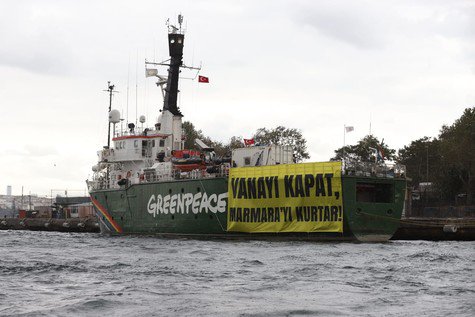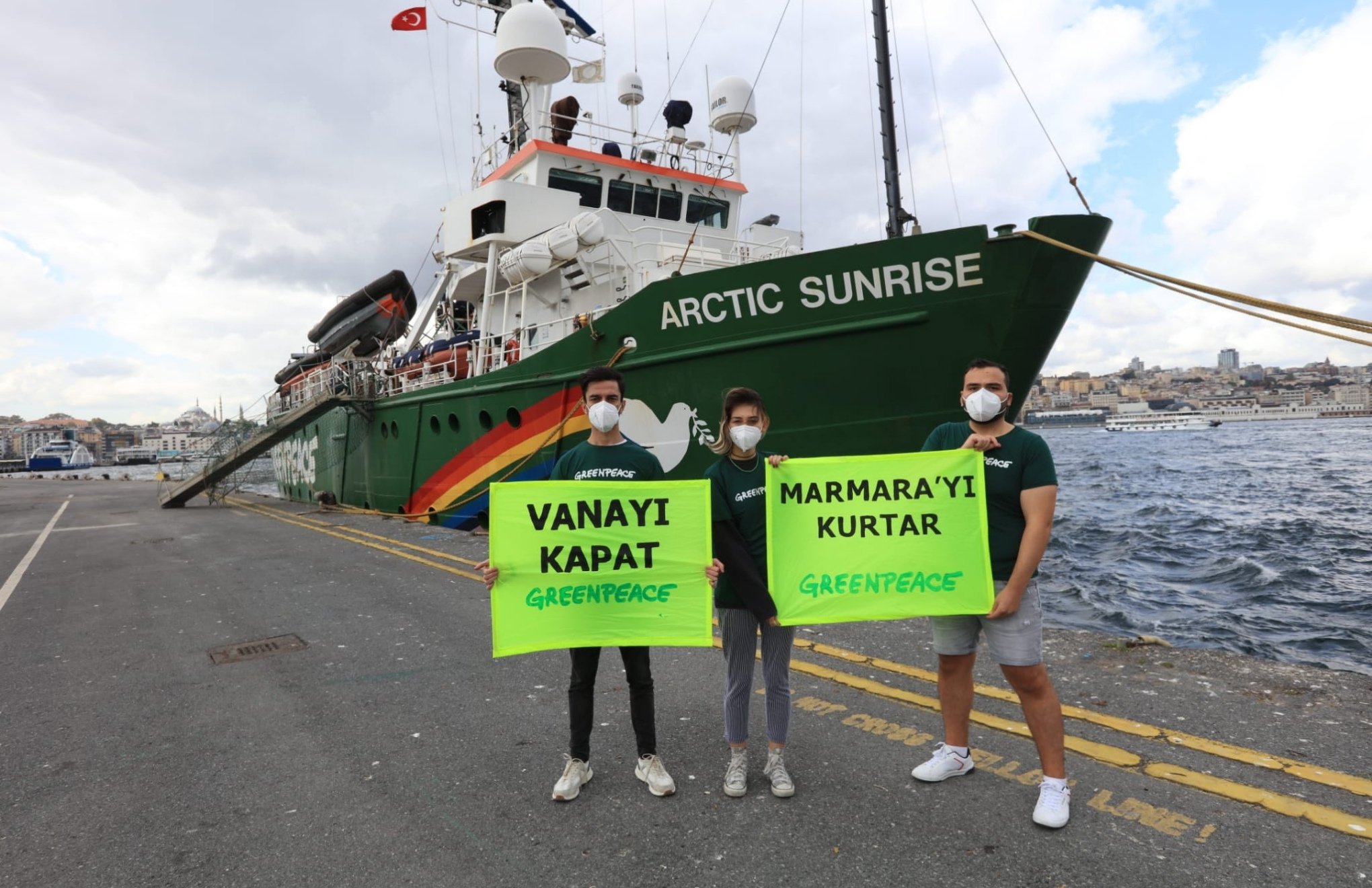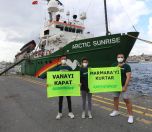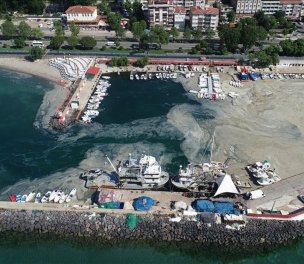Click to read the article in Turkish
Arctic Sunrise, an ice-breaking vessel operated by Greenpeace, fights crimes against the environment, from the Southern Ocean to the Gulf of Mexico. The vessel arrived in İstanbul on September 28 as part of Greenpeace Mediterranean's campaign of "Close the Valve, Save Marmara."
With its campaign, Greenpeace Mediterranean has been underlining that the deep sea discharge from the Ergene triggers the pollution in the Marmara Sea, calling on the authorities to "close the valve."
As a solution for the problem, it has been recommending that the industrial waste in Ergene should be processed with chemical treatment on site and the treated water be used for agriculture and irrigation.

Offering different types of support to the campaigns about biodiversity and climate change in different sea and countries, Arctic Sunrise was in Greece before arriving in Turkey. It did research about sea mammals in the Aegean Sea for the Greece office of Greenpeace.
However, it will not do any scientific research in the Marmara and will go to Croatia afterwards to support the Climate Emergency Campaign.
Briefly about the Arctic Sunrise
The Arctic Sunrise is an icebreaking vessel operated by Greenpeace.
Before Greenpeace chartered the Arctic Sunrise, she was used as a sealing vessel, and activists had once confronted the ship while she was delivering equipment for the government of France to build an airstrip through a penguin habitat in the Antarctic.
The Arctic Sunrise's first trip took her to the North Sea and the northeast Atlantic, where Greenpeace documented marine pollution by oil from offshore installations. Since then, the Arctic Sunrise has worked everywhere from within 450 miles of the North Pole, to Antarctica's Ross Sea, and has navigated both the Congo and the Amazon.
Designed as an icebreaker, her rounded, keelless hull allows her to navigate through sea ice - but also makes life rather interesting in rolling seas. In 1997, The Arctic Sunrise became the first ship to circumnavigate James Ross Island in the Antarctic, a previously impossible journey until a 200m thick ice shelf connecting the island to the Antarctic continent collapsed.
The Arctic Sunrise has returned repeatedly to the Arctic to work on a variety of issues, including several visits to Alaska to study climate change and to oppose Northstar, British Petroleum's project to open up a new offshore oil frontier that threatened oil spills in this vulnerable region, and further contributing to global warming. In 2009, she spent many months working around the coast of Greenland and Arctic sea ice, documenting the effects of climate change on the region.
In the Southern Oceans, the Arctic Sunrise, along with her sister ship the Esperanza, thwarted the attempts of Japan to pursue its so-called "scientific" whaling programme; she also chased pirate vessels fishing illegally for Patagonian Toothfish to the pirate port of Mauritius.
Maneuvering directly into the missile's path did not prevent the US from proceeding in 2000 to test its "Star Wars" missile defense system, which threatens to ignite a new nuclear arms race.
Fortunately the Arctic Sunrise survived to tell the tale and continued on to Argentina for the start of the Latin America toxics tour in 1998. (Source: Greenpeace Arctic Sunrise Facebook account) (KÖ/SD)







